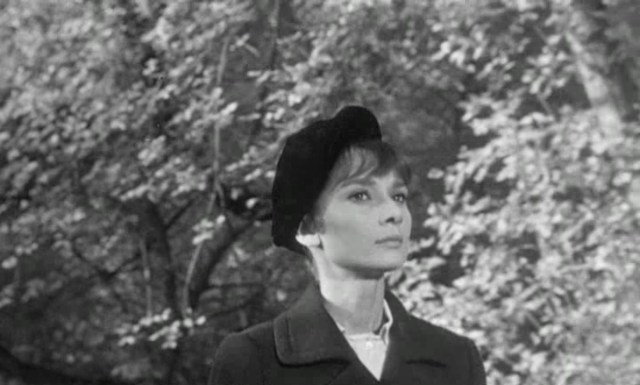Thirsty Classics is a nine-week miniseries celebrating lesbian cinema from before 1980. We often talk about these films like homework or mere stepping stones, but Drew is here to share how they can be fun… if you’re horny enough. This week: William Wyler’s The Children’s Hour (1961) starring Shirley MacLaine and Audrey Hepburn.
Turn of the (latest) century classic If These Walls Could Talk 2 starts in a movie theatre. The year is 1961. “You’re afraid of hearing it, but I’m more afraid than you,” Shirley MacLaine cries desperately at Audrey Hepburn. The camera pulls back to reveal straight people leaving the theatre in disgust. We cut to an older lesbian couple watching intently. They’re holding hands. One of them cries.
This trio of shorts will end with Ellen Degeneres and Sharon Stone conceiving a child. But it begins with The Children’s Hour to show how far we’ve come. “Oh, too much high drama for my taste. I like comedy better,” one of the women says upon leaving the theatre.
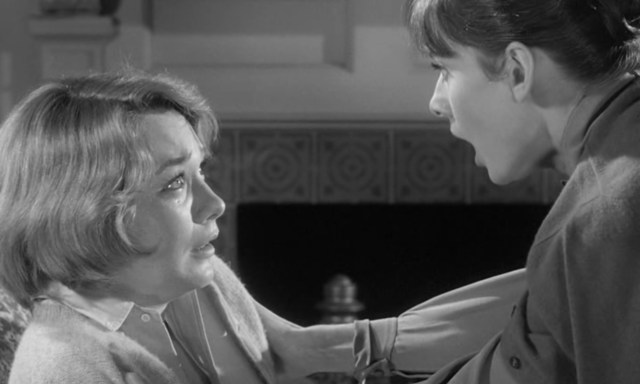
William Wyler’s adaptation of Lillian Hellman’s 1934 play is not known as a fun movie. In fact, (spoiler alert) it famously ends in suicide. Audrey Hepburn and Shirley MacLaine play best friends, gal pals if you will, who run a school for girls. They are named Karen and Martha, but I’m just going to refer to them as Audrey and Shirley because I think a level of remove is the best way to approach this 60-year-old film.
Audrey and Shirley went to college together and opened up this school, but now a straight cis man (ugh) threatens to ruin their bond. Doctor Joe wants to marry Audrey Hepburn (sure!) and she agrees because it would be nice to have a house filled with books. You know, like a straight woman! Shirley is an absolute wreck over this and doesn’t know why. Her excuse that they need to focus on the school is less than convincing and her washed-up Broadway star aunt has started to notice. “It’s unnatural. It’s just as unnatural as it can be,” she scolds.
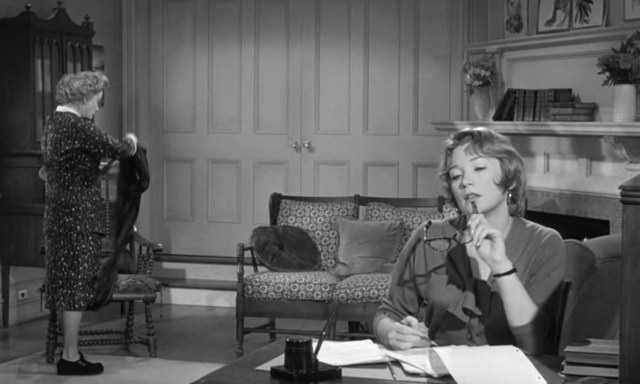
Some of the students overhear this argument and the most insidious of the bunch, Mary Tilford, decides to use it as revenge. She’s mad about some light punishment she received for lying, tardiness, and generally being a terror. When her cries of unfairness are ignored, this cross between Damien from The Omen and every girl to ever appear on My Super Sweet 16 devises a plan. She accuses her teachers of lesbianism, and blackmails a fellow student into corroborating. Her grandmother believes her and one by one the children are removed from the once-burgeoning school. It’s a lie. But as Shirley MacLaine will cry out later in the film, “She found the lie with an ounce of truth.”
Lost amidst this plot, amidst the lies, the ruined lives, the self-hatred and shame and suicide, is a detail I really must underline: Audrey Hepburn and Shirley MacLaine play queer women in love. These two adorable lesbians crackle with sexual tension and even in the most dramatic moments connect in a way that’s heartwarming and sexy.
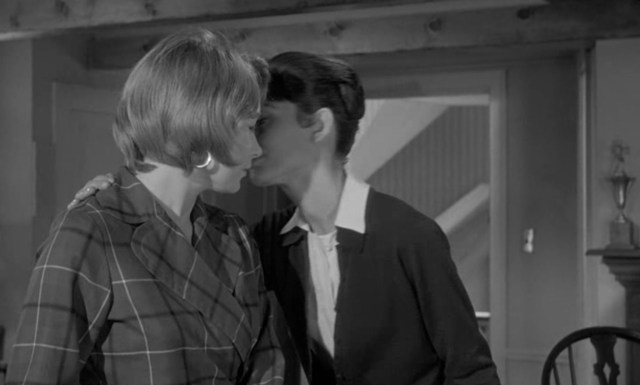
Early in the film while celebrating the school’s success, Shirley mentions they can now afford to get Audrey some new clothes. “What about you?” Audrey asks. “Oh, I’m a skirt and blouse character. We’re always in style. You’re Fifth Avenue. Rue de la Paix.” The futch/femme dynamic is strong with these two. Shirley daydreams about their first meeting. “I remember thinking, What a pretty girl.” Later, Audrey kisses her cheek and Mary’s eyes widen. Mine do too.
Audrey Hepburn is obviously beautiful. Dorm rooms everywhere are plastered with her face, a femme ideal to aspire to. But I have been, and always will be, in love with Shirley MacLaine, and it is so much fun to watch her lust after a woman. It’s unsurprising that MacLaine was often cast as a sort of prototypical manic pixie dream girl. She’s so good at covering up a deep sadness with a cute smile… and then betraying that emotion with a glimpse in her eyes. But while she’s the object of desire in films like The Apartment, here she gets to be the one who desires. And oh, how she desires. She’s consumed. She desperately wants to hang up her cardigan, rip off Audrey’s pencil skirt, and open an all-girls school, if you know what I mean.
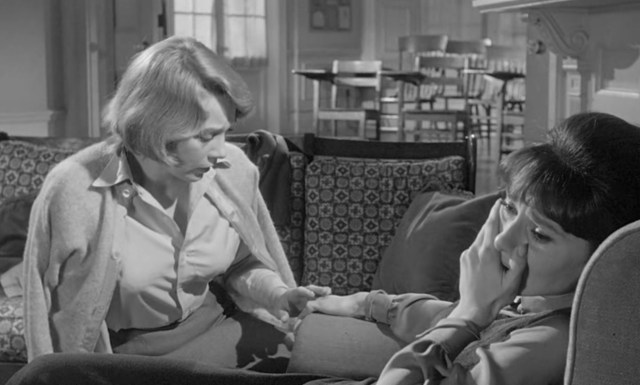
I’m not sure if Shirley’s hair is a bob with layers or a pageboy or if a pageboy is just a bob with layers, but it’s so cute and whenever the movie dips into high drama it gets more and more frazzled. It has weird, perfect curves with a swoop of bangs covering the left side of her forehead like Phoebe Waller-Bridge’s gay foremother. And while the movie is in black & white, it’s still so obviously, beautifully, strikingly red.
The Children’s Hour is an odd movie because the villains are correct. They may lack tact, they may be malicious, but they are correct. Straight audiences in the 60s took away a message about the dangers of gossip. But the real tragedy is not the accusations of homosexuality, but, rather, that accusations of homosexuality are inherently seen as negative. Mary Tilford is so aggressive in her brattiness, she almost feels like a high camp villain determined simply to yank these two tentative lovebirds out of the closet. And it almost works. Audrey ditches the doctor and suggests they get out of town. “This isn’t a new sin they say we’ve done. Other people haven’t been destroyed by it.” But Lillian Hellman and William Wyler won’t, or, more accurately, weren’t allowed, to have Audrey and Shirley canoodle their way to San Francisco. The excuse they find is Shirley’s self-hatred.
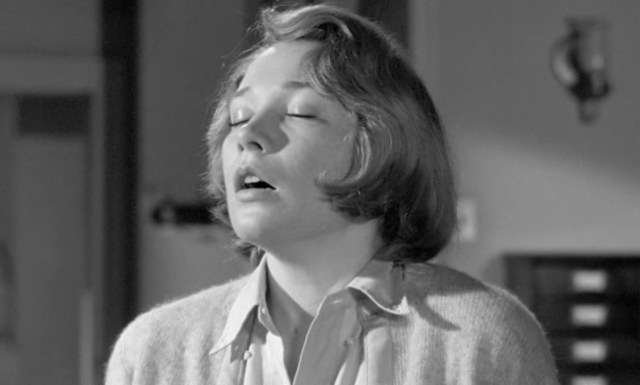
The most famous scene of the movie, the scene that opens If These Walls Could Talk 2, is Shirley’s confession. “Listen to me! I have loved you the way they said! There’s always been something wrong. Always, just as long as a I can remember. But I never knew what it was until all this happened.” She continues with even greater emotion, “I don’t know how, I don’t know why. But I did love you. I do love you! I resented your plans to marry maybe because I wanted you. Maybe I’ve wanted you all these years.” No maybe. Definitely.
This scene is heartbreaking, truly. I want to make sure to say that. But. There is a certain pleasure in watching Shirley get increasingly breathy, a shock as she grabs Audrey’s arm, an enjoyment to watching her overwhelmed with gay emotion. I would love to live in a world where Audrey Hepburn and Shirley MacLaine starred together in a Roman Holiday-esque rom-com. But that never happened. There’s still something fun about watching two of Hollywood’s biggest stars of a bygone era playact lesbianism. Even tragic lesbianism.
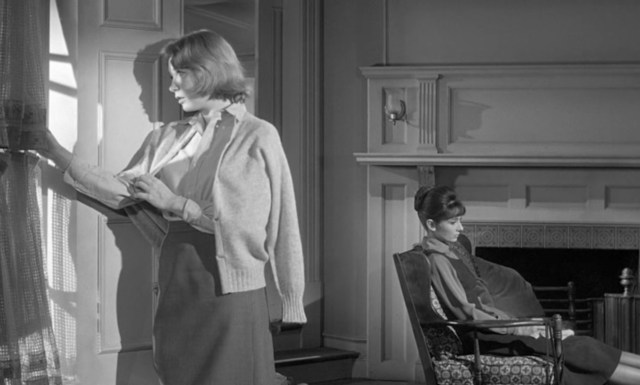
Despite the two women ultimately being absolved, Shirley’s character still decides to end her life. It’s a dramatic twist that’s unearned. But it’s the only way a play in the 30s and a movie in the 60s could end. Audrey attends the funeral still determined not to be with the doctor. She walks away from the cemetery wearing a small black hat worthy of Shirley’s Fifth Avenue dreams. Her face contains an odd peace. Maybe she’s off to do what Shirley couldn’t. Maybe she’s going to start a new gay life somewhere. I’m projecting, but in her face I see hope, I see a future where lesbian cinema will move beyond subtext, beyond tragedy. And yet, also. I see someone who got to kiss Shirley MacLaine on the cheek, nuzzled briefly in her perfect hair.
